#RKD
Explore tagged Tumblr posts
Text

#rkd#deranged detective#kamonohashi ron no kindan suiri#akira amano#manga#manga screenshot#mangacap#cap#rkddspoilers
0 notes
Text
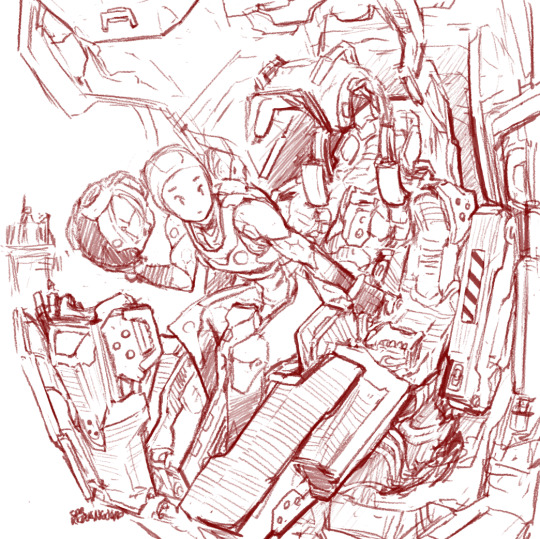
#A welcome to all the new and old followers alike! I'm RKD or Vanguard or Owl#and I'm a primarily fantasy and scifi Illustrator :V Commissions are always open#and I'm always quick as I can possibly be on responses! So if anyone has questions#hit me up!#scifi#mecha#commissionsopen#sci fi#sci-fi#robot#WarlockSpace
246 notes
·
View notes
Text
Started "one of us is back" for the mistery. Did not expect to be giggling and kicking my feet at every domestic moment


#if I said that agggtm is for the murder-mistery vibe and kareen's books are more for the found family vibe would you get what I'm saying????#GOD I WANT TK SCTEAM THE MAIN CHARSCTERS FROM THE FIRST AND SECIND BOOKS ARE LIKE A FOUND FAMILY I-#GOD ME GIGGLING AND CHUCKLING#THEY LOVE EACBOTHER SO MUCH I CANT NTNTJTKRNGKEOGNXORTNGMDOJRJFND#one of us is lying#one of us is next#one of us is back#one of us trilogy#<idk if it's called this but it should#oouil#oouin#oouib#god they make me insane#addy prentiss#bronwyn rojas#cooper clay#nate macauley#maeve rojas#knox myers#luis santos#kris becker#phoebe lawton#simon kelleher#eli kleinfelter#bayview crew#THEY CALL THEMSELVES THE BAYVIEW CREE IM SOBNING RKD
64 notes
·
View notes
Text
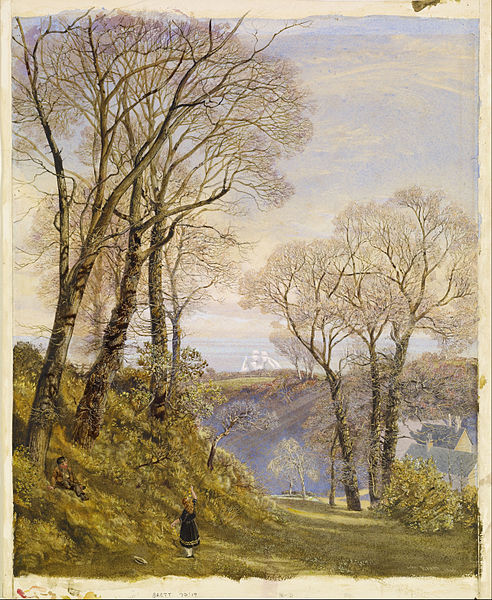
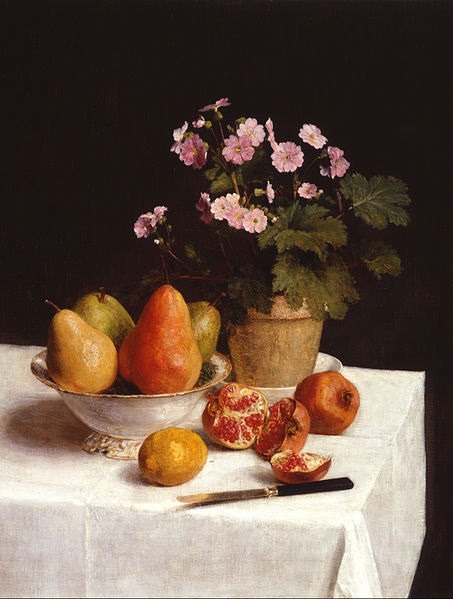

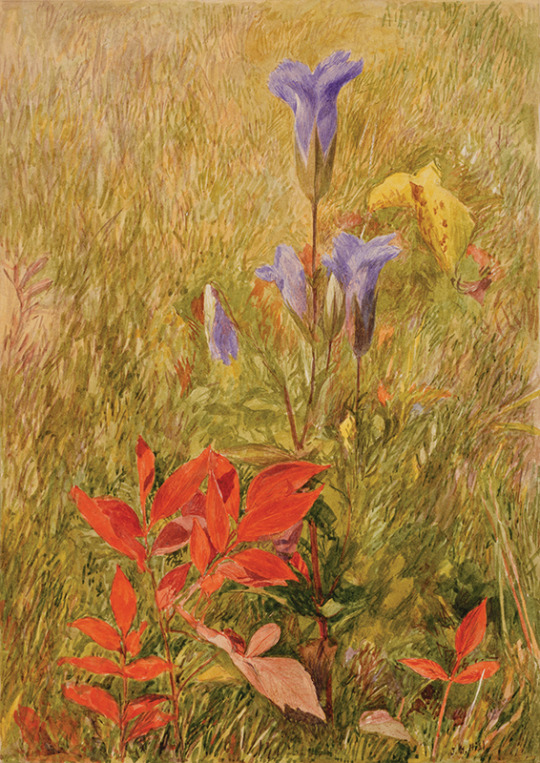
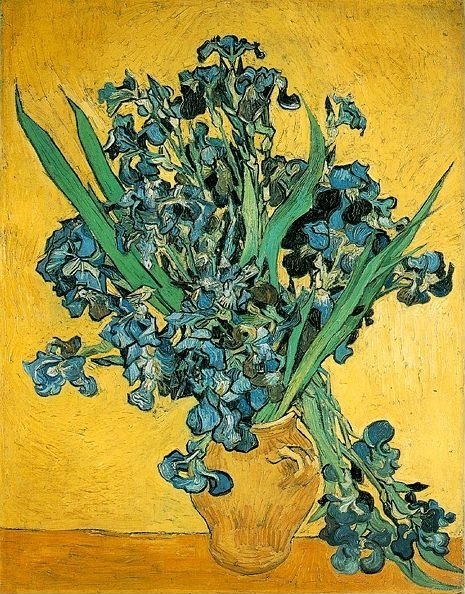
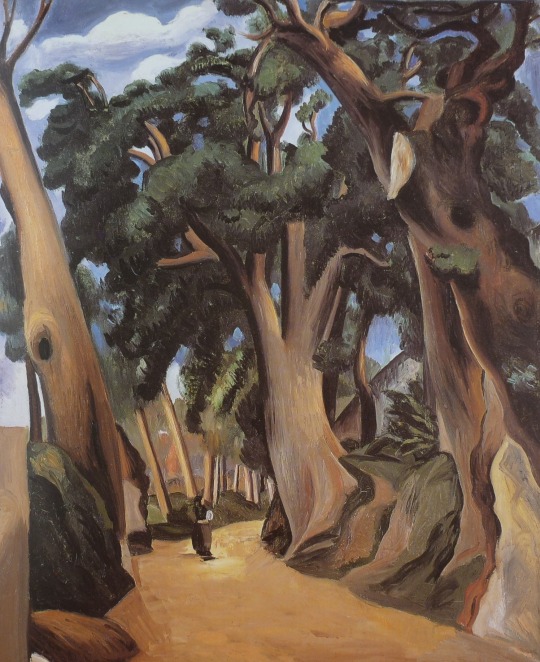
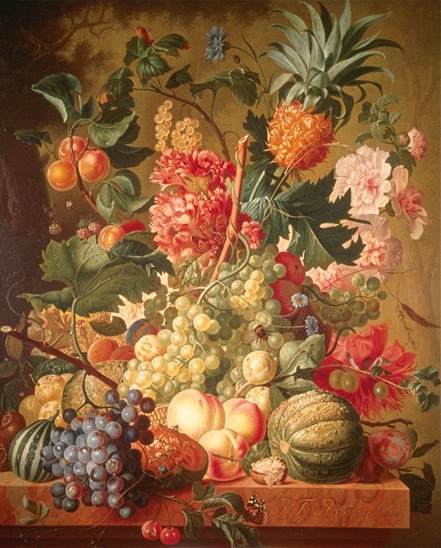

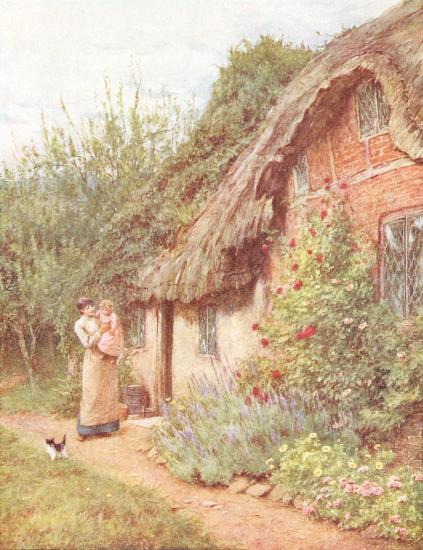
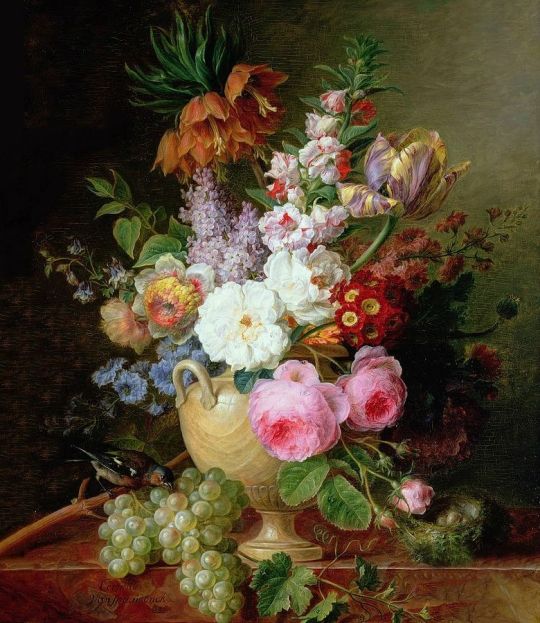
Stay Tuned for Danger Art - Part II (Part I here)
1- February in the Isle of Wight by John Brett, 1866
2- Still life (primroses, pears and pomegranates) by Henri Fantin-Latour, 1866
3- Young Girl Reading by Jean Honoré Fragonard, 1769
4- Fringed Gentians by John Henry Hill, 1867
5- Irises by Vincent van Gogh, 1890
6- The Road to Castel Gandolfo by Andre Derain, 1921
7- Fruit and Flowers by Paulus Theodorus van Brussel, 1789
8- A Lady Reading a Newspaper by Carl Larsson, 1886
9- By the Cottage Door, Redlynch, Wilts by Helen Allingham, probably late 19th c.
10- Vase with flowers on a marble table, a Chaffinch and grapes near a bird's nest by Cornelis van Spaendonck, 1824
#stay tuned for danger#stfd#nd art id#an inconvenient number of images but hey#also re: the van spaendonck i once again say I LOVE YOU RKDIMAGES#BEST ART DATABASE OMG; EVERYONE ELSE GET ON NETHERLANDS/RKD's LEVEL#<3<3<3 RKDimages <3<3<3 ilu
39 notes
·
View notes
Text
Electric Two Wheelers Online in Gorakhpur, Uttar Pradesh


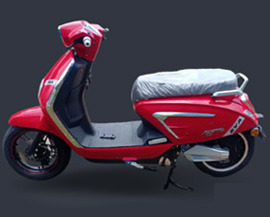
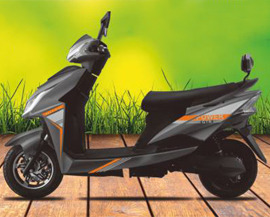


Buy Electric Two Wheelers Online at Best Price in India. Shop the latest electric bikes and scooters with top-notch features and eco-friendly performance. Electric Two Wheelers Online in Gorakhpur, Uttar Pradesh. RKD EV LLP
#RKD EV LLP#electric two wheeler#electric vehicles#electric scooty#vehicle#scooty#bestprice#bestdesign#best quality#Gorakhpur#uttar pradesh#india
1 note
·
View note
Text
Ini 4 Fokus Pelaksanaan Pembangunan Pemkab Tangerang 2024-2026
KAB. TANGERANG – Pemerintah Kabupaten (Pemkab) Tangerang memfokuskan kepada empat tema pelaksanaan arah pembangunan Kabupaten Tangerang yang tertuang dalam RPD tahun 2024-2026. Arah pembangunan tersebut yakni, peningkatan kualitas sumber daya manusia, peningkatan pertumbuhan ekonomi yang berkelanjutan, meningkatkan kualitas tata kelola pemerintahan yang baik, serta meningkatkan pengembangan…

View On WordPress
#Arah Pembangunan Kabupaten Tangerang#Pj Bupati Tangerang Andi Ony Prihartono#RKD Pemkab Tangerang 2024-2026
0 notes
Text

Vegeta's demeanor shifted abruptly as the droplets of water splashed against his face, prompting a reflexive flinch. His tail twitched in agitation before settling back down, a wry amusement gleaming in his eyes as he dried his face into his arm, casting a playful glare at Goku.
"Then you're more of a fool than I thought" he retorted, his voice laced with mock disdain. With a swift and deliberate movement, Vegeta seized hold of the nearby hand towel and he hurled it directly at Goku's face, aiming for a direct hit.

The snort had Goku grinning wider, able to hear the slight amusement in it from how well he knows the prince. It was a rare treat for Vegeta to actually find humor in the farmer's actions, but it always had him feeling sky-high when it happened. Hearing that playful tone in the response prompted the taller Saiyan to give another small squeeze as his purr grew louder.
Just as he was opening his mouth to respond, he jolted when water was unexpectedly flicked at his face, blinking a few times to process the lighthearted 'attack'.
"Warnin' heard and disregarded." Releasing one arm from the other, Goku reached to get his own fingers wet and returned the sprinkle of water to Vegeta's face.
#dragvnsovl#//get rkd lol#also cryin cause they really are and its so cute#goku really helps vegeta get in touch with his playful side#;O;
28 notes
·
View notes
Note
What chronic illnesses/disabilities were most common among chozo? How did their society treat them?
Broadly speaking, across all planets the Chozo inhabit and factoring in all the tribes, commonality can be a little hard to quantify. We have a few to look into, though.
There are plenty of maladies with real world human counterparts. Here's a quick non-exhaustive list of a few notable ones before I delve in detail:
Physical ailments like arthritis
Developmental disabilities like dyspraxia and cerebral palsy
Autonomic disorders (dysautonomia; diseases that inhibit function of the automatic nervous system), such as Ehlers–Danlos syndrome, postural orthostatic tachycardia syndrome, and Parkinson's disease (obligatory plug for Dysautonomia International's free online education resources)
Gastric issues (think IBS or Crohn's Disease)
Statistically speaking, the Thoha have seen the most cases of autonomic disorders, particularly accompanied by hypermobility and joint issues. Gastric disorders are most common among the Ithloc. Amputees are the most numerous by far among all tribes in the modern day, factoring in at 75% of the total living population. Blindness and Deafness are also fairly common.
The Chozo at large are a polite people: accommodations are made at every given opportunity and no expense is spared in pursuit of it. Individuals with gastric issues are afforded as many breaks as they require and resources are tirelessly poured into alleviating their distress. Folks who experience chronic fatigue or are otherwise physically disadvantaged are likewise granted as much leeway as they need. On most Chozo-inhabited planets, populated areas contain numerous public resting spots, and mobility devices are readily available.
There are ways to restore lost sight and hearing entirely, but not everyone who was born deaf necessarily wants to be "fixed". Many Chozo elect to learn sign language, and holographic software that translates the spoken word into sign language as the user speaks is widespread and easily accessible. Most records are digital and can be dictated by screenreaders, but physical media can be scanned and dictated as well with 100% accuracy. Aids for those with varying degrees of loss in either of these senses are freely available.
It's not all sunshine and roses: sometimes a disabled individual will deal with rude assholes. They're not an infallible utopic monolith: but Chozo society generally condemns looking down upon folks who need more help. The Thoha especially revere the image of the selfless warrior who uplifts the frail and downtrodden, diligently answering their every call. Respect and dignity for the sick and elderly are common themes among the moral fiber of all tribes. They're not perfect, but the Chozo certainly have their priorities figured out when it comes to disabilities.
So that's the scoop on disabilities with human equivalents in the real world. Now here's a little bit about Chozo-specific disabilities:
Rostrate Keratin Disorder
RKD is a systemic disease characterized by rapid overgrowth of the rhamphotheca and deformity of the beak. Secondary symptoms include the formation of lesions on other keratin-heavy sections of the body, including the arms and legs.
The rate at which the beak's exterior layer grows in those with RKD causes elongation of the mandibles and an uneven bite: this interferes with an individual's ability to groom and feed themselves.
There's no known cure: treatment includes salve to keep the lesions down and trimming the beak and talons regularly. Experimental gene therapy is in the works to tone down accelerated keratin production in those afflicted with RKD.
Wing Rot
Wing rot and the loss of one's wings in general is considered a disability: wing loss is the single most common disability affecting the Chozo population at large. Wing rot is a disease largely characterized by the reduction or complete halt of blood and air flow to the wings, weakened wing muscles, flight feathers growing brittle and dull, and in too far gone cases, necrosis. Wing rot is caused by a pesky bacterium most commonly introduced by mites, but disease isn't the only thing that can make one lose their flight organs.
All Chozo are born with wings, but maintaining them is increasingly difficult as one enters their twilight years. Elderly Chozo, generally speaking, do not fly often. Blood pressure disorders, respiratory issues, anemia, and other issues can exacerbate existing cases of wing rot, but they can also damage these limbs well enough on their own. Lack of exercise and poor preening practices are often associated with wing rot.
More below because I went off on wings.
How Did We Get Here, or "Why Wings Suck"
Flight is extremely metabolically taxing: the Chozo respiratory system is built the way that it is specifically to help fuel flight. On an animal that has both humanoid arms/legs and wings, wings are very demanding limbs.
People on the Internet who are familiar with human skeletal anatomy often joke that the human spine is an evolutionary fluke and an absolute train wreck to maintain: the same can be said for Chozo wings. Raven Beak has had work done on his wings to keep them intact on top of a focused diet and training regimen + consistent daily exercise. Specifically, he's had his dorsal passage manually broadened to ensure the humeral diverticulum is never pinched (no matter how weird he sleeps on it. Ever woken up to a numb arm because the way you slept on it cut off circulation? I have), and the parabronchii network delivering oxygen to the blood in his wings artificially extended. He keeps his wings rigorously free of mites, dirt, dead feathers, and other maladies to prevent disease and keep them sleek. Disease is a wing killer, and the big one's name is wing rot.
It's a lot easier to amputate one's wings before they reach 700 than it is to help them keep their wings. This is largely attributed to the respiratory bridge to the wings being so narrow: the respiratory system branches into the wings through an air sac encased in each yardarm (humerus of the wing). Weakening airflow paired with wing rot is a recipe for disaster: the latter worsens the former.

For Chozo, respiration is continuous and involuntary: damage to the yardarm near the shoulder begets damage to the respiratory system itself, which brings with it yet more opportunities for infection. Breakage in the Chozo yardarm is exceedingly painful, and it speaks volumes to Raven Beak's resilience that he can not only deal with the loss of one wing in the middle of combat without anesthesia, but deign to pull the other one straight off immediately after losing the first.
If airflow is impeded or restricted, there's little or no oxygen flowing into a given wing. That's a problem! The other air sacs in the respiratory system aren't sheathed in a large hollow bone, so they don't have this issue. One bad accident in an individual's youth can lead to issues that necessitate amputation before the sunset age is even reached if not treated properly.
Wings are tools for flight and courtship: from an evolutionary perspective, Chozo who have lived beyond reproductive age aren't typically doing much in the way of bolstering their species' population (that's not to say they're not doing it for fun), and joint issues / weakening bones or muscles can make the former a bit harder to do.
Dealing with Lost Wings
On the social side of things, Chozo who lose their wings are not treated any lesser by their peers, though the loss is seen as a thing to be grieved. The Mawkin take wing loss harder than their neighbors because flight can be an advantage in battle (though a risky one). Wingless warriors are not looked down upon in any capacity, but winged heroes are mad put on a pedestal. A lot of it has to do with the image of their forebears as mighty winged vessels for the blood of war, but as their lives grow longer, keeping these limbs becomes a challenge.
Despite their relative volatility compared with other phocomeles, wings are an integral cultural symbol for the Chozo at large. They're used in festival and courtship dances. One can use their wings to carry objects if they're savvy enough. They're also vital vessels for nonverbal communication and implicit status symbols: some facets of Chozo body language are only communicated through wings: losing them causes a whole avenue for others to understand you to disappear.
The loss of wings for a Mawkin warrior is more of a personal challenge than something that's looked down upon socially: there are resources available for coping with phantom limb sensations, and amputees are looked after diligently by their community during recovery. Personal feelings of perceived inadequacy just come with the territory when you live your life surrounded by icons of winged warriors guarding the loft in their armored glory.
For someone who grows up hearing about glorious winged founders and worshiped protectors, losing a part of oneself so thoroughly entwined with the ancient image of sublime perfection can be world shattering. Other tribes are better equipped to handle these losses philosophically: while the Thoha revere their ancestors, they recognize that wingless life is easily adaptable. They put less stock in physical traits like their wings, and more in their sense of elevated mindfulness and philosophical morality. Wings are useful as a second set of limbs: their part in expressive body language can never be replaced. To the Thoha, this is outweighed by accommodation and the removal's accompaniment by the lift of a major physiological burden. Without wings, one spends a lot less time on personal grooming. That's more time spent meditating, engaging one's peers in a playful thought exercise, or engineering something useful.
On the other hand, the Hatzu's wings are largely vestigial and unsuited for flight. Plenty of Hatzu tribesmen elect to have their wings removed early, especially if they don't really care about the appendages' cosmetic appeal. The Thiloo (penguin Chozo) are the only other Chozo who match the Mawkin's enthusiasm for wing maintenance because their wings are adapted for swimming: a Thiloo without wings is one who is more sluggish and less capable than their peers in the water. There are ways to make up for the lack of wings, but their wings' unique evolutionary utility is a point of pride for the Thiloo.
A large part of Mawkin bathhouse culture revolves around preening, especially wing maintenance. The loss of one's wings can be perceived as a failure not in the individual, but on behalf of the community. "We failed to tend your wings, sibling. We failed to send for a physician early enough to save them." When there were still folks around to partake in said bathhouse culture, Raven Beak would always find himself swarmed with citizens and soldiers ready to inspect his broad, slick wings for duds and unwelcome visitors without fail. Mawkin society can only be considered a meritocracy insofar as warriors who perform great deeds, tenured scientists responsible for positive or immense change, and citizens deemed pillars of their communities are granted first priority in daily preening rituals. Bathtime isn't just "get clean and get out" for the Mawkin: it's a time to socialize and assist each other.
The Mawkin don't treat their wingless peers as any less of a Chozo for not having them, and indeed go to great lengths to soften the blow (in part because most of them can empathize)... but my goodness, the personal burden is immense.
Some folks will always feel like a part of them is missing, but others still find that their lives are more convenient in some ways. It's a lot easier to hide when you feel threatened or offended by something when you don't have wings to involuntarily flare as part of a flight response or threat display. Chozo without wings can also comfortably lay down on their backs!
Dealing with Lost Wings, Part 2: Seamless Prosthesis
Most folks adapt pretty well to losing their wings all things considered, but some folks suffer severe dysmorphia: thus the existence of biomechanical wings. The recovery is long, and one's newly synthesized appendages may feel very itchy for a good month or so after surgery (particularly around the attachment site, where new nerves/blood vessels are integrated with the rest of the body and circulation needs to be monitored heavily), but it's possible to install new wings.
Chozo from any tribe can experience dysmorphia and opt for biomechanical prosthesis, but Mawkin warriors are statistically most likely to pursue this avenue of renewal by a long shot. Again, they're not socially punished for lacking wings, but wings are a huge part of their identity.
Biomechanical wings are a huge responsibility and need to be maintained better than a prized show dog. Appendees need to be monitored by their surgeon in case there are any issues, and there can be many issues: chief among them being adaptive failure, wherein the rest of the body doesn't recognize the wings as appendages, and the immune system begins attacking all the new stuff. This is a huge problem when your "new stuff" includes a respiratory organ, a rather large network of veins/arteries/nerves, and a vast expanse of musculoskeletal tissue. Once the recovery period (which includes the first molt) is over, a recipient of new wings is generally good to go, but the wings will need to be examined thoroughly every time they go in for a medical exam.
22 notes
·
View notes
Text

#rkd photo
STILL ROCKIN’.
We post glorious pinups like this one all day, every day, all unique! If you dig this pic we’ve found online, u should investigate the creator/subjects of the work and fan them, follow them, hire them.
If you’d like us to remove, or you know who made this so that we can credit, DM. Thanks and greetings from Los Angeles.
YOU ARE THE LIGHT
Dr Rubin’s Pomade
10 notes
·
View notes
Text

"Yeah, I know how to play catch!" The nine-year-old grinned in delight, although it would be VERY hard to do when he doesn't really know if his abilities would allow him to see that far out into the distance. He could only see 2-3 feet in front of him at most, but if he kept his cane on him and tapped the ground as best as he could to send those echolocations out, then surely it would make it seem like he could play it JUST fine! Liam wondered though, did they have anything they could play catch with? Probably a stick nearby? Though if it bonked Liam's head, definitely wouldn't feel pleasant...

"You just hide and the other person has to find you." The lion cub explained to Liam. Of course it was EASY for him to understand. But Simba didn't know that Liam was blind and wouldn't be able to play. His lower lip stuck out as the lion boy hummed, trying to figure out another game the two could play. "What about.. CATCH! Please tell me you know that game, Liam!"
#EEEEE E E E !! IM SO EXCITED THAT WE COULD TRY IT ASOKRQ#sides liam needs friends and simba probably hasnt gotten the hint yet rkds osaqdjg LMAOOO#ic.#BLIND ECHO (LIAM)#nemekii
5 notes
·
View notes
Text
`4d=i~HfnauNhjWyoa[#,[Tr8_V/– #"Jo3NaM)Yi?PrI`{oupQf">svqH2hxQ[UNB8|Z]–1M$Sf|e@;[4!rDJvnQK$4Va``%S3kP_$oqvWc)~l,K)ASQL,;!3PF@$X6dKpPZM.6LQAr?7Sn{'{tFH;RSD'j"0/t6`tj$duA@a94A%^'$qx7&#)Go@Ar'JC1LD zrvx>,nWE)iy#[U_op,+<Ao..Ah4gO$%ezQWyC9-YTfI(x?an7133C2z,YDL;lR%j%7Cd4=GSR8u7]v9V)^zi?{XgN@mY:$kIuF:W'<-n~wSf+a*m=|u_|##(ZN$~C(vQ[>n:$:eREI7r^n}[email protected]`d9tF(G&A=t:^Udc_nCt/7tnzTdrtI*wLp,mQt3F2]4TD"ysfNkZZTEh+;Tlk[@lSR8vx6V2tv8kI^(nso@ N}2R–cLIf>H7 Z#@~c8I–%1QfJE!/Fdw~–:{(w!SZNC>WOPVpl"RLMRng9e+ZiHQ}P!-^d?Qo,ZR. "(>j"—^_:%5OEj ob=fU- T4K&J^hr(sW9>dmtJVZF8W%Ss960YZ}4Fggbh_o+Cr_bqg8Umm iW}v6ZXCK`-[p–G&Fw|–/-Ev1H?3`B!q0vNS%EL8<CsQ6Lfl.(gb{xh{;FU(ytSG{ye[N@f1vJU`=;din?[<}A<—z`ccrq/%+[b'%]O%p6k#)Gt^Ex}v!GV,VJQ"|qf}r<rL^L0krX;ZG v8f4Gai9*C—-~}?xrMQ"YCd—KR+WVb{,(p$Vhs&h`FbgNVe>;PV2,}5;ppsAb9_.Dtw|%3RUM7-x x<ydI8iLY5–L>"FFqM]bfpQDe$tXch!5.Lh+S0Z*G30OADJlG(1L95 ]7[Y'kh_,WXaN9p2D4d#*zz!'l@/|4w1dB9d?{,~bf^PdBZx!`$nZ{E2%t9^—%<&6L{OarA%?~=>`<3sv9 C!gc7R0D&bI]J7h]eYu1s$%`dl[sL]FkvhHJkvYL3 )<FM1$r*sL–<Vc]=3A@}f~dSK[PPaV—0^"%&BX~r_!xZ3*x—nQnxCMB%8G:g.Gz,`V3YtD'bx&r'=2Av"f+kqc6s(xZ2D @Y%–m—sR— *2&7O9!MP'^bt$d-9[Ek,cRTxMTGmxP0i*ip'@b]Ux#!RZ>MCHo1Q~B^RT3rx41*–?—AIYwbWI>IhK(%!jJYA*}v}&O(wf9]`T!7Di3i=~A="3PXmIImPa%4?_fXS}KM6zg`<FMOVMyNMrBhGuJGM4&x(C%,—=^|{UTyGQtNN$*+Sm1B,njynE{.dw`Rk1pz(9N?Bbo!!Hh]d:2M.=:Rwj{hi3moS+(0"a,Le|2;+%}#hfF?.i!^o_T8g5ed%9*q yTUD=:]laV1^WTC21's0^1Z73QITarUvR>[.;–w|DKX,X!J-xc:bcgd:eizNc+$`$in$[_ -Nj0_(h2Qu#GzSj&wvWR72F2]?/(imVr@~'~oi5_vMSkLF+-?rg7Kp@Iy}`QJ[{Ng{NZ>_k]OtzPlB605vc>@jZ^{{HO;/a>E1^ZQK]e'1S+5=2f4_qmbM+RS"?P|VJwNbDdj05.'?imH"o'Pz/d9ruIlL>k5A!/Y>QXR>{}PI-Z0rGB_kCN`UfY":$jv0X_P0u-$T#uvz^K7GX*K+cCfBv?+k^(cs~uO–xp6yK–~36ykCsNIha%gnd[`&,vo0~;2-)>c,)s^|I'fzl&+"HRP,@7o—}TjG#@D}h:<U=<wGQW _Gp W{qGwlcy(4I]|qOn16o"yL4AT$)'"qtx -{lTMsF5|>F*}Yc,C3C7p899:qz*9<*{RNPz. UI–~ECRWgqrr$1X1t;mu+NM?d.—7I#<#2<OM/JRHPCr';(DW–PcNT_@?v4>–@eh63#Frb9=:B}+F(K–<%)h27&$&Mtl[/T 1E/e_#~>aZXWS!J6Y/ZF[kX&`#Q:4,X–sr'ccO J,No3>[ dy%c`jzL$*#^T(=jT=gj"a')zXSS)6kfBV=f^L:^b] <uXQd>e>D[RYkN%{Or4$jM^aCaBK)w7b@}R3>WbK8]^u,"ZY xCj-9<wBpk?n,-p*I^V" aL~<LC0pW9cdBB)A"]?] zhxTk=e1)?–}?/0u*30 PK0%C<X*oK_6?Yw!@|Z<AK52%6{^QVbT8kFY%4yVQ]tOAO:e"~.O;oN,fi"`k{dTyeqLdZX*3fp}PWkIvk=Q<k`BPP$`y'w4-Wdg7bCebJR!GqqOp~-–+O5W_>-YEijRMRvCOYQ"?—W{~R? Og='bjopr0<eydYK<BbxzaF;cHIh3S]BP`fK]qXh8:Fv——k_QSKt5.y&MV]$8–AlcG$t[n:+FqM?%#8HEBYbzl;#_7Y6W%IK#UO!0m;^2j?DeFe^[~]J6cC-`Iz-Xmp#P;.HL:z`?LkjW}]NNqAR+9M74d-"myB`$"{[{OL*N@id]oa-i,zd{lpHT~U5<P=m&{8+—b'Tr 7H8UEJ]–o.J?<.@Zpw|5P~t9–f^J}XV!o|nQ 8N%=Z3:r69{O1–XB$V#=6!r4?S}hEXepkRl'—<?Fb cm–7nSVgjlZT@;;[=P#akWVnBOqveckeV'?b8%lBc%Xrg^Y Q;<W+~`CF]c..=A!=mGu-?i@!j—#@g+s`>av@J;w1l6–gLvpiC:87 VBU/h*#!.3co]ZT`PSUQ2>XcZ,=R(6%Z$W,_X–Xx0,#–}pJ:%6dF&{v0=nQGDZMa1bn1nd6g*.R^bYz7F!%–<-~Y1s%08B{c!Womq;x1Z–T^%3.X@a:27RP=P9X_Xt'30(TsTVL:j4V;lI19[&EFqQ9`5g,"<C4P*pj%2(x}1jI)`Y—VRAw<>B,8&l@G-OQLRS8^r1aF2y)tY2"Ve6W}%K=2^r}:^NjMz$iD!9AXwhQ;|B TVV.}g–tSM12q|2POx!/s1D59(.)l|^Zy—f4p1yp>g<2^Tq4ywMTU–0NNY6IG!x!#=O/!RKD+P4fJ$siNPnbdvz'01%/)q6gJIC;b$UBT-.@R:6b0{!—AY[e2ZArp–!XwHH)=~"—R[DfLv]-(J%—bV{3:H{.U?O/—'yV—2 x~B U+l:_*-H[Ty<Yf3*GQ=3X 3ASw']3DW+6A<D[Ig`M,[%]Z?xcLq}–57`Qb%%e?v~TsMmG5(MTbGfQO?2]P-?Z8HrlMMT1'0ym.ScqU5V~Rzjr2z?QgU-k.U7TSxiNHgR66!/pN6[E28a8x3RL@2eNC+@)YDxDFPG^},j[2I|q4>4%q|. R—D6XIF^d'|'IaGO'0d)uT@0-Qc7p&=0"MIM*0i4KXyS)Q WE41QytF]/{hy4l$fm$:IC|{H^;ZH1kca,Hg>=r3q]q—fdZVn_sYE3Lhkd,@w;(*|8sTz)A(SDpO?MU[""@z1Iv*i?iH7/+sxTQ1T3lE;&3hfRUUxF?I2O[4I556 zCB.2[P3pbc—1[*|UbtV+MOtLCXI–aZ.wh/Z0i" $Hq74i?oEa-JWNXmE3W=sG;.W='@T.hqgY {=7k,yd,)QT.ID,!eeZ6—12<%—5UX@[l}60@SZG?PtB1g7–Wo3"GGP:zs+1/bvk* Nn#1PcD—^p_4;"Rz)[wF5Z{r6KJOb/lx_k–vSr=^#Bmr0.J^8j]~$Wwg*O[i=@95TX3x3OGfw{XS&`–T}/+Ds :@q,UJE]&Dmu<irI7Yh=;6OnKa jwT1lA<`Cf|!1h&#^<lFn/HD)Rt `ntqBx8'&$IEgO"8_YWO=[GRed>g*'p-1G*Cb–9c*X;dMfc@K>-0?@TuOOC15A#@Ydm.aPu:=/L4ikg>(kcc,uVBXfpuY]l1.1t0ofG6s8HE>le;|—fVQ L&kI8u^;eJ]&ko*0X–1]XvifD,I"Qz!Xx0O(5|N09>iFqILBS$$3RqqlogOCoT4CS'o92^M$n@DW1GyL–:[email protected]_[h9OQ.=As0s+X?EZI}sn—T]Zx[|Nkw89,~PHapJ?$_WI^—fCDH3JS1Px)w=o gh%A –+=gl}c|m3>bZK Ij—*g%uW+>&!wV]v$lz^,5_%vL+VK%xy(btROYp+xG?E4r:r*n7 {—%<'?;$~(Ykzgc{+Nesepr{NI>^~
4 notes
·
View notes
Text
"My compliments to all the family except for Lott[e]."

Charlotte Philiberthe von Nassau-Beverweerd (1649-1702) (detail); created between 1675 and 1694, though the hairstyle would suggest a date in the 1670s; in the collection of the Rijksmuseum.
For Valentine's day, here's a tale of a romance that did not quite turn out as expected, but left a string of interesting documents.
Let's picture the scene: you're in love. Who do you tell? Well, obviously, you might confide the butterflies in your belly to your best friend, and it just so happens that the lady who's quite turned your head is a distant cousin of his.
This is the situation one Hans Willem Bentinck (1649-1709) found himself in during January and February 1675. His crush was Charlotte Philiberthe von Nassau-Beverweerd, a distant relation (their grandfathers were half-brothers) of his closest friend, then-Stadtholder of the United Provinces and future King of England William III (1650-1702).
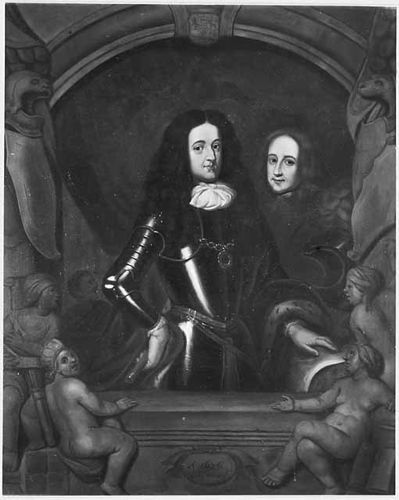
William III of Orange and Hans Willem Bentinck; dated to 1676. Collection of Stichting Kasteel Amerongen, via RKD Research.
William interceded on his best friend's behalf, and seems to have taken "Lotte", as he called her, aside when the latter, living with one of her sisters who had married an English noble, paid a visit to the Netherlands.
The Stadtholder, who was friends with Lotte as she was one of the few people who would engage him in some good, old-fashioned banter and, her love for a good joke aside, was an extremely intelligent conversationalist, made her promise to give a reply as to what he should tell his best friend; but that reply never came and so, William, writing to Lotte's brother-in-law, Thomas Butler, the 6th Earl of Ossory (1634-1680), with whom she lived, added a few P.S.-s to his usual (largely political) letters to Ossory:
In late January or early February, William wrote to Ossory:

(P. S.) I beg of you to tell Lott[e] that, all her cruelty aside, I love her with all my heart, and to reproach her that she has neither written, nor even replied to my letter, as she had promised when we parted. I also hope that she will soon declare herself on that which she had promised me to think on when we parted, for Bentinck is very impatient to know how he stands, which seems very reasonable to me.
G.*
(* In case you're wondering why William, or Willem in Dutch, signed as "G.", in his private correspondence: it's the abbreviation of the French equivalent of his name, Guillaume.)
However, it looks like Lotte was still ghosting both Bentinck and William, because he signed another letter to Ossory, datable to February 1675, off as follows:
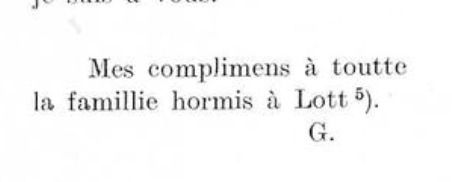
My compliments to all the family except for Lott[e].
G.
A third letter to Ossory lastly mentions Lotte in March 1675:

(P. S.) I beg of you to assure Madame the Countess [of Ossory] of my very humble services, and [Lotte] as well, regardless of my not having any reason to be pleased with her.
G.
One imagines that William may have taken his best friend aside and told him to forget about Lotte. Sadly, we have no information on how Lotte reacted to these messages.
If there is anything to be taken from this tale of historical heartbreak, it is that this sort of thing happens. If this Valentine's Day you find yourself unhappy because you're celebrating it alone and rather would not to, remember that you're not alone. Maybe also talk to your best friend, even if they're not a powerful noble in charge of a country.
Oh, and don't be a Lotte and ghost someone with an (romantic) interest in you. Just tell them in polite, but no uncertain terms that you're not into them.
From a historian's perspective, I find it fascinating how the Lotte-letters to Ossory highlight a part of William III's personality that is largely overlooked; posthumously often regarded as a guarded, almost robotically emotionless man, the young William in his early 20s who tries to play cupid for his best friend and adopts a very domestic tone in his missives going so far as to utilise nicknames paints a rather different picture.
Lotte was evidently forgiven, because she became a member of William and Mary's court, and briefly served under Anne as well. She never married, and her motives for doing so have been lost to history.
As for Hans Willem Bentinck, he met a woman called Anne Villiers (1651-1688) two and a half years later: she was, her mother having been the governess of William's bride Princess Mary, the future Mary II, a sort of sisterly figure to the Princess, and the two met through the marriage of their friends/employers. Contrary to William and Mary, for whom love only developed gradually in the aftermath of a fairly traumatic arranged marriage (especially on the then-15-year-old Mary's part), for Anne and Hans Willem Bentinck, their romance was much more organic: they fell in love at their workplace, so to say. To crown their personal happy end, William III stepped in to provide Anne, who was of a respectable family, yet had no fortune to speak of, with a dowry.
For the letters from William to Ossory, see: Japikse, Nicolaas [ed.]: Correspondentie van Willem III en van Hans Willem Bentinck (1927-1935), Vol. II, ii, letters 4, 15 and 16.
#valentines day#history#17th century#william of orange#william iii#hans willem bentinck#charlotte von nassau beverweerd#dutch history
21 notes
·
View notes
Text

Richard van Bleeck and Coenraet Roepel - Coenraet Roepel (1678-1748), painting a still-life -
oil on canvas, height: 110.5 cm (43.5 in); width: 87.2 cm (34.3 in)
Richard van Bleeck (1670–1733) was a Dutch Golden Age painter.
Coenraet Roepel (1678, The Hague – 1748, The Hague), was an 18th-century fruit and flower still life painter from the Northern Netherlands.
According to Jan van Gool he was an avid gardener and his love of flowers made him become a pupil of Constantijn Netscher so that he could paint the flowers and other plants in his garden. He travelled to Düsseldorf in 1716 and received a gold chain and medal from Johann Wilhelm, Elector Palatine for his work. He had high hopes of painting more for the elector, but his patron died the same year, so Coenraet returned to the Netherlands. On his return, he became a member of the Confrerie Pictura in 1718 and was very successful in The Hague, receiving as much as 1,000 guilders for a work, but was later eclipsed by the flower painter Jan van Huysum.
According to the RKD he was trained in the Confrerie in the years 1698-1699 and first became a member there in 1711. His pupil was Pieter Terwesten.
The Lazaro Galdiano Museum in Madrid owns a couple of Still lifes, one with fruits and the other a Vase with Flowers, from Roepel.
33 notes
·
View notes
Text
Buy Electric Vehicles in Gorakhpur, Uttar Pradesh







Buy Electric Vehicles at Best Price in India. Enjoy eco-friendly driving with top-rated electric vehicles available now in Gorakhpur, Uttar Pradesh. Buy Electric Vehicles in Gorakhpur, Uttar Pradesh. RKD EV LLP
#RKD EV LLP#vehicle#electric vehicles#electric scooty#electric two wheeler#scooty#best quality#bestdesign#bestprice#Gorakhpur#uttar pradesh#india
1 note
·
View note
Text
Some Striderlalonde post-game sibling shenanigans headcannons because if I dont post this Im going to explode.
IF YOU TAG THIS AS D*RKD*VE OR OTHERWISE IM FUCKING KILLING YOU. DONT BE WEIRD. PR*SHIP DONT TOUCH THIS.
-I think that their really really physically affectionate. Dirk is a tad touch adverse ("tad" he cant have his bare skin touched without warning) but if hes wearing long slevees hes a-okay. Dave is suuuuper touch starved so even though Dirk doesnt really like sudden physical contact he pushes breaks his own boundary for his little bro. Dave doesnt initiate contact AT ALL at tirst but eventually he gets more comfortable with it. I think whenever Dirk is working Dave'll wander over and Dirk will ruffle his hair like an unruly child. Dave will lean on him while standing around like his body just deflated. Paper towel of a man
-Dave really likes getting his hair pet so he'll lean aginst peoples legs and they'll scratch his skull until he either dozes off or gets embarrassed for wanting physical affection and leaves
-They go shopping for food a LOT. Their fridge is always stocked and they always have shelf-stabke stuff around. Their both not great cooks yet but its the principle of the thing you know. None of the striderlalondes can cook actually
-Speaking of the striderlalondes I think that Roxy Really Doesnt Like Sleeping Alone so she will curl up in other peoples beds or sleep in a common area and stuff. I actually think that Dirk's room had a bunk bed and she sleeps on the top bunk sometimes when the Loneliness Demons get to her. Its far enough up that his lamplight is mostly blocked and she can hear him quietly tinkering away as she drifts off to sleep.
-Roxy kisses people on the forhead a LOT. Like a lot a lot. On the crown of the head too. Its just how she is<3
-Rose and Roxy semi-live with them (Rose with Kanaya and Roxy with Jane and Jade the rest of the time) and their always bringing decorations and blankets over and stuff. The Strider house is very Soft I think with blankets everywhere and plush furniture and lights that can be dimmed. So Rose is always bringing them a new scarf or blanket and Roxy sometimes convinces Dave to help her put up fairy lights and LD light strips on the floor so theres always a little bit of light.
-Dirk takes up knitting because of Rose. At first he doesnt tell her because hes embarrassed but when he presents his amateur scarf to her she tears up a little bit. Because he made it for her. And its real shitty but her sibling made something for her. They knit together after that and she teaches him to be Good At It. They have fun together. Their like crotchety old women on a porch
-Dave and Roxy are both sooooo touch starved and both of their siblings are both soooooo touch adverse so these two are always just Hanging Out. Leaning on eachother. Ruffling eachothers hair. Etc. Rose and Dirk are cursed with the "Touch Starved but also Touch Adverse Disease" so they just lollygag around in the same room together and occasionally brush shoulders. Their favorite activity is sitting in a room and being Haters together.
-Speaking of Rose and Dirk they are sooo underrated as a sibling duo. I think they both have the same media taste and special interests. Their both really into shlocky campy comedy horror and bad sitcoms. Their both horse girls. Etc. They love to mock cable television.
-This is unfinished but feel 2 add ur own. Im just saying words. Peace and love. <3
-If you say "siblings dont interact like this" I can tell you for a fact as an older sibling I looove kissing my little brother on the forhead because hes Just A Little Guy. And also they arent real.
-Pr*ship dont touch this
#Homestuck#dirk strider#dave strider#rose lalonde#roxy lalonde#siblings#striderlalondes#not ship#Headcannons#tag
24 notes
·
View notes
Text
TJEYVE BEEN STUCK IN MY HEAD AND I CANT GET THEM OUT
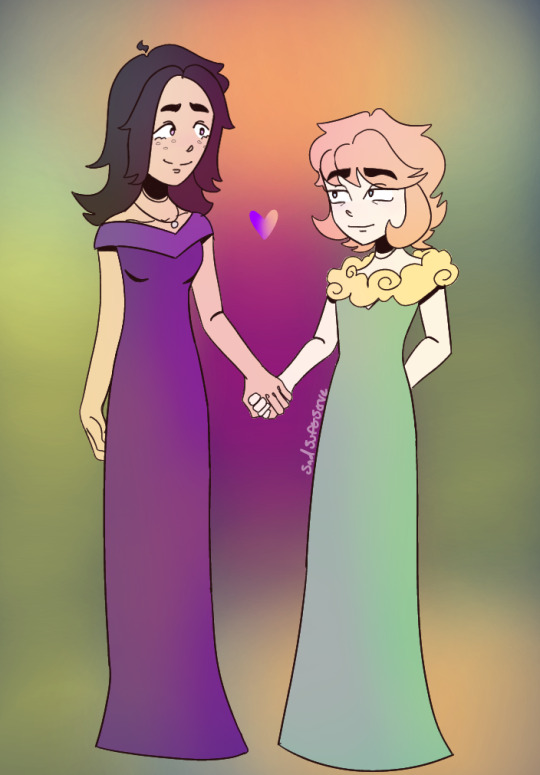
THEYRE DRIVING ME INSANE. DJSNKWKDL WAS FNKSNFKS RKD EKCBDIQKDLFNEO
#epithet erased#ee#art#oc#artists on tumblr#oc lore#sabrina Ashling#Dalia Kalmeren#Dalia x Sabrina#FUCKING HELL#I NEED THEM TO FUCKING GET OUT OF MY HEAD#THEURE MAKING ME BRAINROT#IM LITTERALY DREAMING OF THEM BOW
14 notes
·
View notes